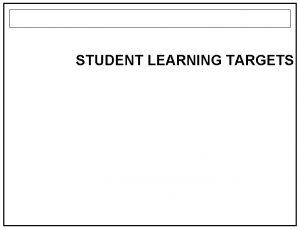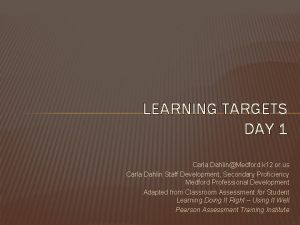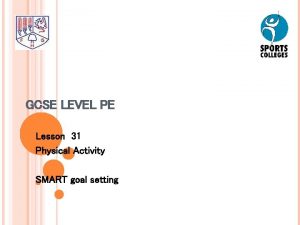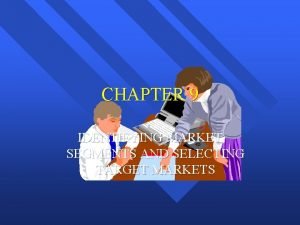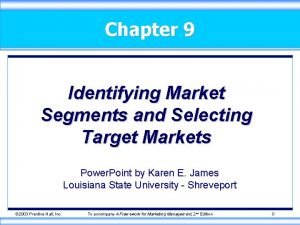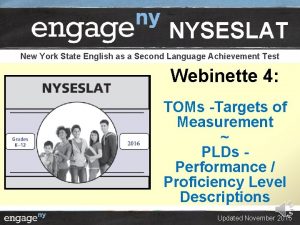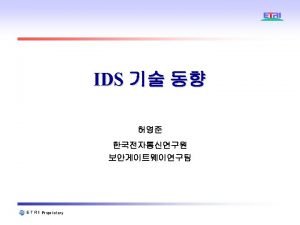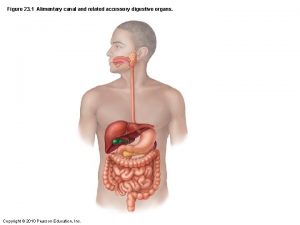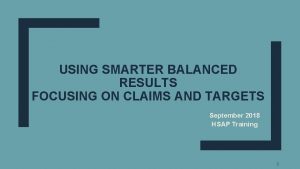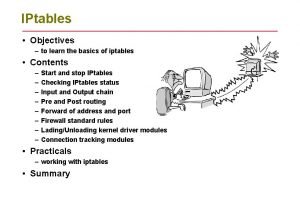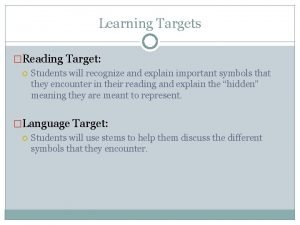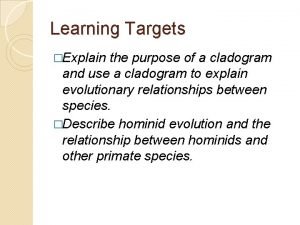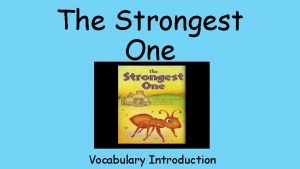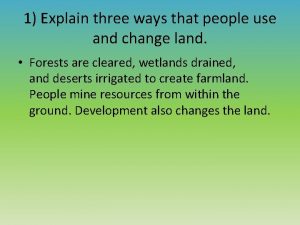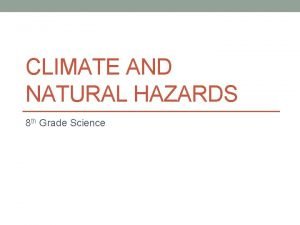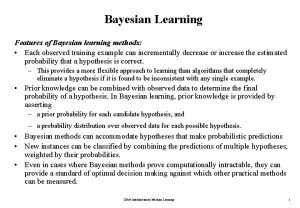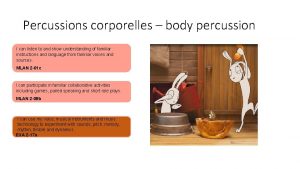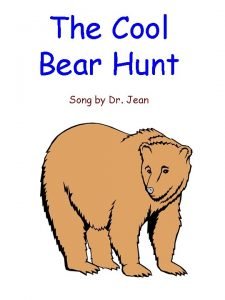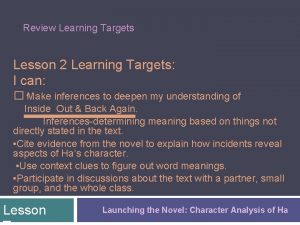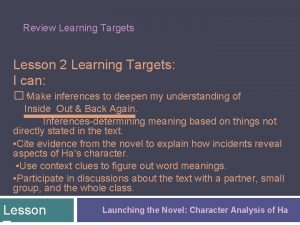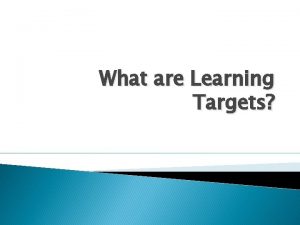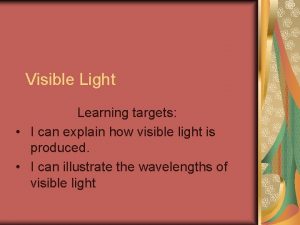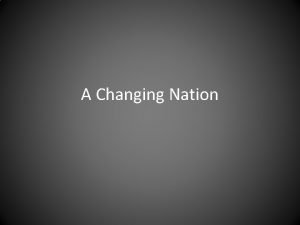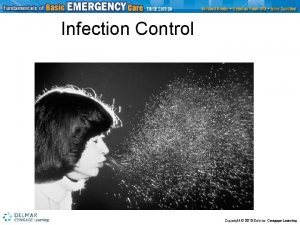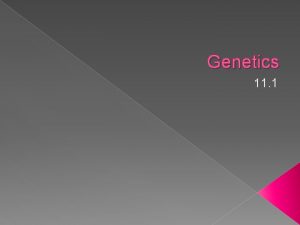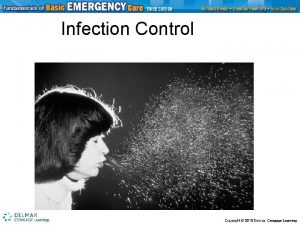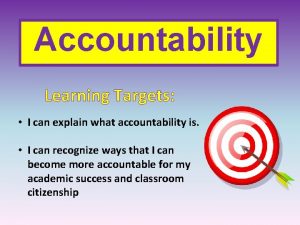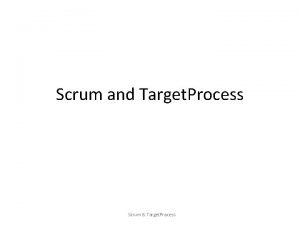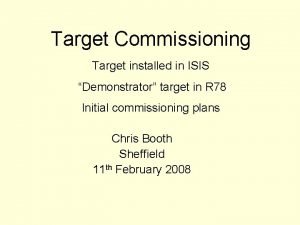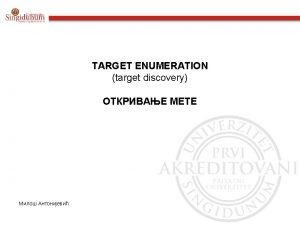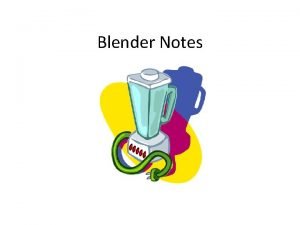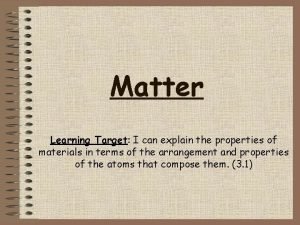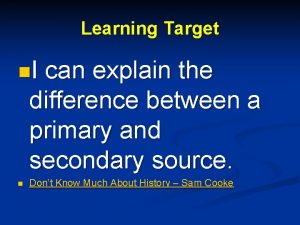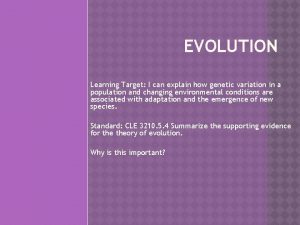Learning Targets Learning Target 9 I can explain
























































- Slides: 56

Learning Targets Learning Target #9 I can explain theory of Continental Drift, and how it was developed. Learning Target #10 I can infer past and future movements of Earth’s plates using evidence from theory of Plate Tectonics.

Vocabulary (Put in Index of Lab Notebook) n n n n Pangaea Continental Drift Lithosphere Asthenosphere Plate Tectonics Tectonic Plates Law of Uniformitarianism

Introduction to Plate Tectonics n n Video Hook https: //app. discoveryeducation. com/tec hbook/concept. Guid/E 9 AEA 8 B 81 FC 4 -4 A 5 D-BAA 046999736 F 839/unit. Guid/EBC 84 B 8740 FE-4145 -890765 C 50 B 383880#/tab=exploretab&page=1&sub. Tab=curriculumstandards

Getting to Know Continental Drift 1. 2. 3. 4. 5. 6. 7. 8. 9. 10. What is a major difference between the Lithosphere and the Asthenosphere? How do the Lithosphere and the Asthenosphere interact? Who is Alfred Wegner? What was “Pangea”? What is theory of Continental Drift? What evidence did Alfred Wegner have to support his claim about Continental Drift? Why did people reject Alfred Wegner’s idea? What is theory of Plate Tectonics? How does Plate Tectonics differ from Continental Drift? Which natural processes occur as a result of plate tectonics?

Tectonic Plate

1. What is the major difference between the Lithosphere and the Asthenosphere? n n The lithosphere has rocks that are rigid and can bend, but cannot flow The asthenosphere has rocks that are “plastic” and can flow because of convection

2. How do the Lithosphere and the Asthenosphere interact? n n The lithosphere is broken up into several large tectonic plates. The continents and oceans are attached to the top of these plates. The lithosphere plates ride on top of the flowing asthenosphere.

3. Who is Alfred Wegener? n German scientist who developed theory of Continental Drift.

4. What was “Pangea? ” n Pangea was a supercontinent where all of Earth’s continents were once joined together.

5. What is theory of Continental Drift? n Continental Drift- a theory that states that over time, the continents of Pangea split apart and drifted to their current locations on the globe.

6. What evidence did Alfred Wegener have to support his claim about Continental Drift? n Along the coastlines of Africa and South America, he noticed: n That the coastlines looked like they might fit together like puzzle pieces n The same plant and animal fossils were found

Wegner’s Evidence for Continental Drift Mesosaurus: a freshwater reptile fossil found in Africa and South America. Glossopteris; a fern that requires warm climates was found on Antarctica, Southern South America, Australia, Southern Africa and India.

7. Why did people reject Alfred Wegener’s idea? n His theory of Continental Drift did not explain how and why the continents moved.

8. What is the Theory of Plate Tectonics? n Plate Tectonics- Theory that the lithosphere is broken into plates (which hold oceans and continents) which are moving slowly around the planet due to convection currents in the asthenosphere.


So, How Do Those Plates Actually Move? Simulation nhttps: //www. youtube. com/watch? v=ryr. XAGY 1 dm. E

9. How does Plate Tectonics differ from Continental Drift? n n Plate Tectonics and Continental Drift are the same basic process. However… Plate Tectonics explains how and why continents move because of advanced technology, but Continental Drift does not.

10. Which natural processes occur as a result of Plate Tectonics? n n Creation of mountains Earthquakes Volcanic eruptions Creation of underwater mountain ranges

WELCOME TO THE SOUTHERN HEMISPHERE!

Far Flung Fossils Vocabulary 1. 2. Fossil- the remains of once living animals or plants. Law of Superposition- rock layers at the bottom are the oldest because they were formed first; rock layers at the top is the youngest because it was formed last.

Far Flung Fossils Activity Directions- Day 1 1. 2. 3. 4. 5. Start your journey at the continent at your table. You will investigate the fossils in one rock layer at a time, beginning with the youngest layer (modern timesblue). Use your catalog to help you identify them, and record them on your chart in your notebook. Then, you will dig into deeper, older rock layers. You should finish with the oldest rock layer (300 myared). When time is called, pack your bags and fly to the next continent (go in numerical order). *8 goes to 9, 9 to 10, 10 to 1.

Far Flung Fossils Activity Directions- Day 2 1. 2. 3. 4. 5. 6. Trace and label 4 “Globes” in your lab notebook. Grab a stack of continents from the lab counters Working with one color at a time, arrange the continents location by using the fossil evidence you gathered yesterday. (2 minutes) Share out your ideas with the class. Glue mini-continents into your “Globes” Answer Question 4 b after making each arrangement by time period n Develop a reason for arranging the continents the way that you did for each time period.

Fossils and Living Animals Found on 5 Continents of Gondwanaland ? # Time South America Africa Present Day (Blue) Giant Anteater Earthworm Genus 2, Species 2 #3 100 Million Years Ago (Green) 200 Million Years Ago (Yellow) Secernosaurus #2 Mesosaurus Later Glossopteris Flora Dicroidium Flora 300 Million Years Ago (Red) Kentrosaurus Pangolin Earthworm Genus 1, Species 2 Australia Brachyopodo saurus Echidna Earthworm Genus 1, Species 1 Antarctica None Austrosaurus Minmi Austrosaurus Minmi Later Glossopteris Flora Dicroidium Flora Lystrosaurus Later Glossopteris Flora Dicroidium Flora Early Glossopteris Flora #1 Aardvark Earthworm Genus 2, Species 1 India Early Glossopteris Flora Lystrosaurus Mesosaurus Later Glossopteris Flora Dicroidium Flora Early Glossopteris Flora Lystrosaurus Later Glossopteris Flora Dicroidium Flora Early Glossopteris Flora

Far Flung Fossils Debriefing Based on the activity, what evidence did Alfred Wegener offer to support his theory of Continental Drift?

What are Glaciers? n n Huge amounts of snow, ice and rock debris that accumulate in great quantities and begin to flow outwards and downwards under the pressure of their own weight. They are just sheets of ice that move over land. They do not move continents!

Glacial Grooves n Deep trenches in the land caused by glaciers moving

Present Day Continent Locations

Far Flung Fossils Answer Key Q- 1 a. On the basis of what you found in the red rocks, which continents had similar fossils? A- All of the continents had similar fossils.

Far Flung Fossils Answer Key Q- 1 b. On the basis of what you found in the red rocks, from this fossil evidence, which continents seem to have been connected 300 million years ago? A- All of the continents seem to have been connected.

Far Flung Fossils Answer Key Q- 2 a. On the basis of what you found in the yellow rocks, which continents had similar fossils? A- All had similar plant fossils. South America and Africa had Mesosaurus. Antarctica, India, and Africa had Lystrosaurus.

Far Flung Fossils Answer Key Q- 2 b. On the basis of what you found in the yellow rocks, from this fossil evidence, what can you tell about the connections of the 5 continents about 200 million years ago? A- The continents were probably very close together, but beginning to move apart.

Far Flung Fossils Answer Key Q- 3 a. On the basis of what you found in the green rocks, which continents had similar fossils? A- Only Australia and Antarctica had similar fossils.

Far Flung Fossils Answer Key Q- 3 b. On the basis of what you found in the green rocks, from this fossil evidence, which continents seem to have been connected 100 millioin years ago? A- Only Australia and Antarctica

Far Flung Fossils Answer Key Q- 4 b. Explain your reasons for putting the continents together as you did for each time period. A 300 mya (red): They all contained the same fossils. They fit together like puzzle pieces. Glacial grooves showed where the glacier started and spread to. n 200 mya (yellow): Continents had similar plant fossils, but not all the same animal fossils. This suggests they were moving apart. n 100 mya (green): Except for Australia and Antartica, each continent had its own distinct (different) fossils. n. Today (blue): Continents are in their present day position. Fossils are completely different. n

Far Flung Fossils Answer Key Q- 5 a. Suppose you were the first person to have found the glacial grooves in southeastern South America. From where would it seem the glacier came? Could the glacier have come from the ocean? A- Glacier seems to have come from the ocean. No, glaciers cannot move across oceans.

Far Flung Fossils Answer Key Q- 5 b. Why would the geologist who first found the glacial grooves in India be puzzled by the discovery? A- It seems the glaciers would be spreading out from the equator (hottest region of Earth). Glaciers always start at the coldest point.

Far Flung Fossils Answer Key Q- 5 c. How might the idea of continental drift explain 300 million year old glacial grooves on four separate southern continents? A- When the continents were together, a large glacier formed at the coldest point and spread out in all directions.

Far Flung Fossils Answer Key Q- 5 d. Where on the surface of the Earth was the probable location of the “x” 300 million years ago? (Remember, that a continental glacier moves out and away from its center) A- The “x” on Africa was probably at or near the South Pole

Far Flung Fossils Answer Key Q- 5 e. Where would you look for glacial grooves in the 300 million year old rock of Antarctica? A- On the coastlines closest to Africa (arrows should be pointing downward)

Far Flung Fossils Answer Key Q- 6. Two species of living earthworms in the soils of southern South America and Africa were found to be very closely related. Also, 2 species of living earthworms in soils of southern India and southern Australia were found to be very closely related. How is theory of Continental Drift strengthened by the evidence of closely related earthworms on widely separated continents? A- When South America and Africa were connected, they had the same soil and earthworms. When the continents separated, the earthworms would have changed a little bit (because they had to adapt to their new soil environment).

Far Flung Fossils Answer Key Q- 7. Explain in terms of Continental Drift and evolution how 4 very different kinds of ant/termite eaters could occur in most of the continents. A- After the continents separated, different ant eaters developed to eat the insects on that continent. However, they are similar because they came from the same ancestor from when the continents were connected. (Isolation of Mammals)

Far Flung Fossils Answer Key #8 a n n Reason #1: Continents fit together like puzzle pieces Evidence #1: South America and Africa fit together almost perfectly.

Far Flung Fossils Answer Key #8 a n n Reason #2: Similar plant fossils on separate continents Evidence #2: Early Glossopteris Flora (warm climate plant) fossils found on all continents

Far Flung Fossils Answer Key #8 a n n Reason #3: Similar animal fossils on separate continents Evidence #3: n n n Mesosaurus on S. America and Africa Lystrosaurus on India, Antarctica, and Africa. Minmi was on Australia and Antarctica

Far Flung Fossils Answer Key #8 a n n Reason #4: Glacial Grooves Evidence #4: n Glacial grooves were found on many continents, but glaciers can’t move over water. n Glacial grooves are found on Africa, but that’s too near the equator. Africa must have moved from the South Pole area.

Far Flung Fossils Answer Key #8 a n n Reason #5: Isolation (separation) of mammals Evidence #5: Mammals didn’t exist until after the continents split up. Different anteaters from the same ancestor on Pangea are found on separate continents.

Other Evidence of Plate Tectonics Reason #6 Movement of continents can be measured Evidence #6 • Global positioning satellites (GPS) show that Europe and North America are moving apart by about 2. 3 cm every year.

Other Evidence of Plate Tectonics Reason #7 Matching mountain ranges on coastlines n. Evidence #7 The Appalachian Mountains in North America match up with Mountain Ranges on the coast of Africa n

What is the Law of Uniformitarianism? n Law of Uniformitarianism- the idea that the way things happen today is the way things have always happened in the past, and the way they will continue to happen in the future. n Example: if animals with wings fly today, we can infer that fossilized animals with wings were probably able to fly.

Applying the Law of Uniformitarianism to Plate Tectonics 1. 2. Use the Law of Uniformitarianism to explain how you know Pangea once existed. n Since we know the speed and direction continents move today (by GPS), we can make inferences about where they have been in the past. If some continents are moving apart now, they must have been together in Pangea. Infer where continents will be located on our globe in the future. n In the future, they will probably rejoin to be a new and different supercontinent.

Warm-Up Use your Argumentation checklist (Claim, Reason, Evidence, Rationale) to answer the question below: 1. What was Alfred Wegener’s CLAIM? 11 -3 -14

Warm-Up 11 -4 -14 Write out the questions and answers in your lab notebook. Use your colored diagram of the layers of the Earth to assist you. 1. 2. 3. Which main layer of the Earth contains the asthenosphere? Which main layer of the Earth contains the lithosphere? Which main layer of the Earth contains the continents and oceans?

Warm-Up 1. 11 -5 -14 Review the Plate Tectonics simulation. https: //www. youtube. com/watch? v=ryr. XAGY 1 dm. E 2. List 2 -3 wonderings, comments, or inferences about plate movement.

Warm-Up 1. 2. 11 -6 -14 Read the first page of Far Flung Fossils packet carefully. Be prepared to be called on to share what we will be doing today. Page through the remainder of the catalog to see the types of fossils you will encounter today.

Warm-Up 11 -7 -14 Record LT#10 in your Table of Contents and your next available notebook space (probably after your fossil chart) Learning Target #10 I can infer past and future movements of Earth’s plates using evidence from theory of Plate Tectonics.

Warm-Up 11 -11 -14 Write 3 -5 sentences about what you learned during the Far Flung Fossils activity from the previous 2 class periods.
 Writing learning targets
Writing learning targets Agonist antagonist muscles
Agonist antagonist muscles Forensic science learning targets
Forensic science learning targets Learning target examples math
Learning target examples math Learning targets knowledge, reasoning, skill product
Learning targets knowledge, reasoning, skill product Learning targets helping students aim for understanding
Learning targets helping students aim for understanding Primary target market and secondary target market
Primary target market and secondary target market Warehouse goals
Warehouse goals Racial etiquette targets
Racial etiquette targets Brides magazine targets consumers who are in
Brides magazine targets consumers who are in Targets of change
Targets of change Smart targets gcse pe
Smart targets gcse pe Identifying market segments and targets chapter 9
Identifying market segments and targets chapter 9 Identifying market segments and targets
Identifying market segments and targets Identifying market segments and targets chapter 9
Identifying market segments and targets chapter 9 Nyseslat proficiency levels
Nyseslat proficiency levels The nfl targets several different market segments
The nfl targets several different market segments Attainment targets barbados
Attainment targets barbados Five patterns of target market selection
Five patterns of target market selection Physical targets
Physical targets Djids
Djids Segment invasion plan
Segment invasion plan Pituitary hormones and their targets
Pituitary hormones and their targets Art-labeling activity: figure 23.10a
Art-labeling activity: figure 23.10a Tonnie de koster
Tonnie de koster Europe 2020 targets
Europe 2020 targets Alohahsap
Alohahsap On training targets for supervised speech separation
On training targets for supervised speech separation Iptables targets
Iptables targets Single segment concentration
Single segment concentration Slo goal statement examples
Slo goal statement examples Learning target symbol
Learning target symbol Primate cladogram
Primate cladogram What is need analysis in esp
What is need analysis in esp Learning target
Learning target Learning target
Learning target Cuadro comparativo e-learning b-learning m-learning
Cuadro comparativo e-learning b-learning m-learning A tiny groove in soil made by flowing water
A tiny groove in soil made by flowing water Explain how a sound can be ‘sampled’
Explain how a sound can be ‘sampled’ Difference between testimonial and physical evidence
Difference between testimonial and physical evidence Explain three ways of
Explain three ways of Bill nye weather and climate worksheet
Bill nye weather and climate worksheet Selection of objectives
Selection of objectives Features of bayesian learning methods
Features of bayesian learning methods Factors affecting of learning
Factors affecting of learning If you can imagine it you can achieve it
If you can imagine it you can achieve it Kinds of comparison
Kinds of comparison If you think you can you can poem
If you think you can you can poem If you cannot measure it you cannot manage it
If you cannot measure it you cannot manage it If you can't measure it, you can't manage it
If you can't measure it, you can't manage it Percussions corporelles
Percussions corporelles The arrangement of the elements of curriculum can be as
The arrangement of the elements of curriculum can be as You can tell harris about it just ____(easily) as i can.
You can tell harris about it just ____(easily) as i can. Positive degree examples
Positive degree examples You can speak english
You can speak english Look at the pictures and complete with can or can't
Look at the pictures and complete with can or can't Going on a bear hunt dr. jean
Going on a bear hunt dr. jean
